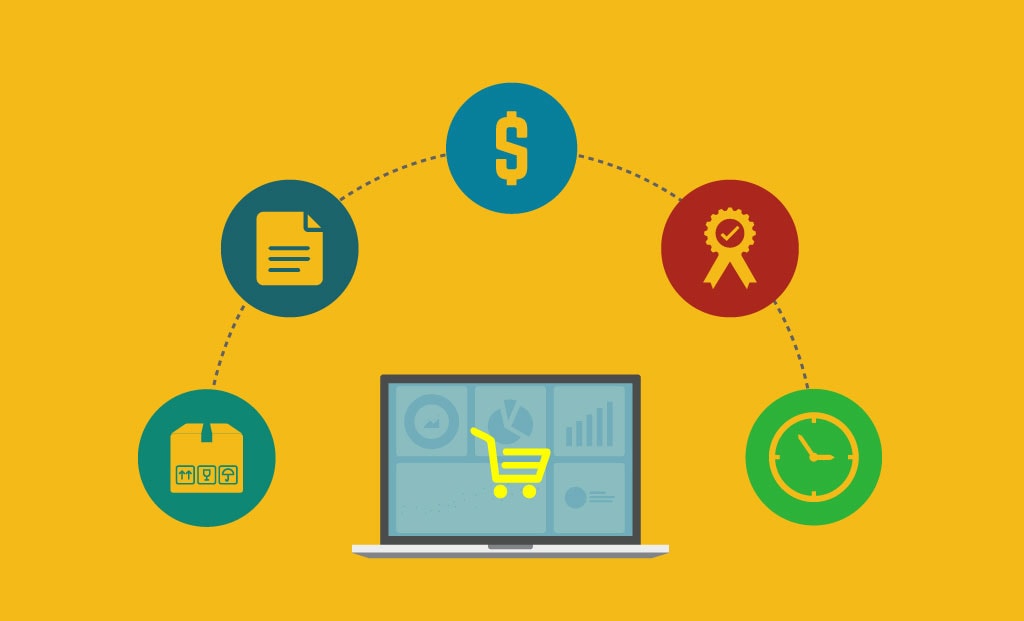Problems Manufacturers Face with their Purchasing Management
Purchase Management is one of the most crucial aspects for manufacturers. Speed of production, accurate job scheduling, and timely product delivery depends on timely replenishment of right quantity of raw materials from approved suppliers.
However, various human and external factors cause materials to not arrive on time and manufacturers end up with job scheduling delays, delayed production and shipment, hurried orders from unreliable suppliers at higher costs, quality compromises, labor overtime costs etc.
With manufacturers using legacy systems or no proper technology at all to manage their manufacturing workflows, they have little visibility over existing inventory levels and number of pending orders. In such a scenario, each department act on their own, leading to chaos and associated losses.
Let’s take an example,
A manufacturer who relies on manual inventory count and tallying is suddenly hit by a shortage of raw materials. The shop floor waits for the materials to arrive, eventually has to delay jobs and make changes to job scheduling calendar. Customers are informed accordingly and given tentative delivery dates. In reality, no one is sure of when the parts will arrive.
As approved suppliers cannot ship the materials in such a short time, the manufacturer has to rely on another supplier whose products cost more and do not meet the required quality standards. As the procurement department does not have a clear number of pending jobs, they order a certain quantity which is more than what is necessary.
Due to the impending delay in jobs, customers are miffed and cancel their orders. The procurement department is unaware of this and have ordered the same quantity of materials. This leads to inventory overstock, increased administrative and storage costs.
All this increases their costs, losses due to lost orders, decreases their sales margin and eventually market reputation.
How ERP Software Automates Purchasing Management?
What manufacturers need is technology enabled purchasing that helps them to keep a track of how much material is consumed for respective jobs, forecast future orders and decide the right time to order fresh stock from reliable suppliers.
All this can be achieved with the help of an ERP software. Let’s look at how.
Auto Purchase Management
An ERP automates the entire purchase management workflow with its advanced Purchase Management module. It provides you with a real-time view of existing inventory status, number of jobs in production along with approximate data of how much materials will each job consume. This lets the procurement personnel to accurately setup auto reorder points to ensure consistent inventory levels. They can also view mismatches between pending jobs and available materials; correct it immediately, thereby avoiding over-stock or under-stock of materials and subsequent job delays.
An ERP software’s ability to provide material demand information at all times lets personnel to take informed decisions on when to order, how much to order at what price from which supplier. Auto purchasing speeds up procurement from suppliers, increases purchase management efficiency and drastically reduces associated costs.
Purchase Management Dashboard
Purchasing personnel spend a lot of time bringing together supplier and material information from various manual data sources (spreadsheets, notepads etc.). This increases their response time towards material shortage leading to disruption.
An ERP provides a comprehensive Purchase Management dashboard that lets personnel to view consolidated information on a single screen. They can view the entire list of POs along with their individual PO status. They can setup alerts for price changes from approved suppliers and take quick, informed decisions. A PO dashboard enables them to drill down to specific PO and make any necessary changes, without the need to exit the dashboard screen, thereby increasing operational speed and efficiency.
Supplier Management Dashboard & Analytics
Purchase Management becomes more efficient with the help of supplier dashboard and analytics. With an in-built supplier database connected to the dashboard, personnel can easily browse through the list of suppliers, both approved and unapproved. User can drill down to each supplier profile and view critical parameters required to make a decision such as, performance, product quality, product pricing, past & upcoming orders, on-time delivery rate, issues etc.
The dashboard also lets personnel label their suppliers as approved and unapproved. This enables them to take quick decisions in case an approved vendor doesn’t have the required material stock. It eliminates their effort of sifting through multiple suppliers and researching about them. Instead, they can just go with another approved supplier and place a PO.
Purchase Order Integration
The Purchase Management module is integrated with various other ERP modules such as, Accounting & Finance, Inventory Management, MRP etc.
The Accounting and Finance module helps personnel to create Accounts Payable automatically from receiving. They can also create credit memo from returns, track pending bills, track price variance between purchase and AP price. Also, it eliminates repetitive data input as personnel can post POs directly to Accounts Payable on receipt of invoice from the supplier.
The inventory module integration helps personnel to constantly keep a tab on inventory that has arrived from the supplier, materials consumed for each job, scrap quantity generated, and number of orders pending.
The MRP module in conjunction with purchase module helps personnel to arrive at material requirements using MRP output. They can add or create existing purchase orders from the MRP. Also, they can consolidate multiple purchases into a single PO per supplier and reduce tons of paperwork. Blanket purchase orders can be created and released to the suppliers from the MRP.
Conclusion
An efficient purchase management system enables manufacturers to order the right materials in the right quantity at the right time for the right cost. All purchase-related activities such as request for quotations, vendor evaluation, purchase order creation, billing, sub-contracting etc. can be easily handled by the ERP. This ensures uninterrupted production, procurement cost savings, consistent product quality standards, good supplier relationship, happy customers and large profit margins.
It’s time to stop telling, “I can’t manage my purchases efficiently and procure goods from my suppliers at the right time for the right cost.” with OmegaCube ERP’s Suppliers and Purchasing Management solution.






One Response
Just exploring your services